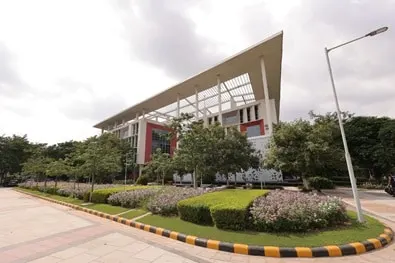Blogs


15 Free Data Mining Tools for 2025

What is Data Mining?
Data Mining involves intensive computation, and that's where the Data Mining tools come into the picture. Data mining involves methodologies, concepts, theories, and certain tools that help Data Miners achieve this goal.
Data Mining forms the very base of Data Science, and it is an extremely important branch of technology in the present times.
We have a specialization in Data Science that includes Data Mining which we offer to our students in B.Tech programme.
What are the Data Mining Tools?
Data Mining software is designed as tools for Data miners to help them reveal patterns, analyze data. Using these tools, a data miner can transform an unstructured, random data set into a more useful, structured, and insightful data set.
This structured data is then further processed by Data Scientists, and models are built using algorithms that help businesses to make informed decisions.
To make Data Science possible and for organizations to make meaning of the data available to them, Data mining is very important. It is possible with the use of the below-mentioned tools.
The Data Mining Tools and especially those which are open-sourced, have significantly reduced the entry barrier.
They make it possible for every data miner to work with data instead of purchasing expensive licenses.
These tools gather data (extracts them), cleanse and refine them, and distribute the data into columns and rows, which helps in effective modification and efficient modeling.
Why are Data Mining Tools required?
Almost every organization has digital data whether they operate in the field of software or information technology or not.
Banks, retail players, telecom companies - every organization generates enormous amounts of digital data that they want to put to use.
Data mining approaches are used by them to study this data. Every data put together is not only humongous but also random. To extract hidden trends or correlations in this data, data mining tools are needed.
Data mining tools combine statistics with computer science and mathematics, much like machine learning. Here's a list of why Data Mining tools are making lives easier:
A) Ease of use:
They are tools with an easy interface that makes handling them quick and convenient.
B) Data cleansing:
Unstructured data cannot be fed into algorithmic models simply because it wouldn't generate desired results. With data mining tools, it is possible to pre-process the raw data and remove inconsistencies.
C) Scalability:
The tools can be used or shared among multiple users. This makes the tools scalable across the entire organization.
D) Quicker performance:
With time the data mining tools have been able to deliver faster results using data mining nodes.
E) Detecting irregularities:
Some irregularities in data need special attention. They are not meant to be eliminated. These outliers or data errors can throw up interesting observations when analyzed. Data mining tools are good at identifying these irregularities.
F) Grouping:
Data mining tools are very good at going beyond defined structures and identifying correlations. Finally, they can group these correlated variables into clusters.
G) Summarisation:
Data Mining tools cluster data into insightful and meaningful information because these tools tabulate the data based on the classification of relationships among data.
Data Mining Tools
Here is a list of the 15 most used open-source software/tools for Data Mining:
i. Rapid Miner
Among the top five data mining tools available through open-source, Rapid Miner holds the top position. Developed by the Rapid Miner company, this tool has stellar performance when it comes to predictive analysis.
Being one of the most widely used tools, Rapid Miner is extremely versatile and can be used for deep learning.
It is also used across a wide range of applications, including but not limited to - commercial use, business tools, training purposes, education applications, etc
Java is the programming language that is used to write this tool. Rapid Miner has a client-server model, and this server can be used in private, public, and on-premise infrastructures.
This tool's framework offers some templates, and it is really fast and delivers with minimal errors. These are the three modules in Rapid Miner:
R.M Radoop: For predictive analysis in Hadoop cluster
R.M Studio: This module creates workflow design, validation, and prototyping
RapidMiner Server: This module operates predictive models that are built in the previous module.
ii. Orange
Orange is a component-based software that is widely used for both Machine Learning as well as Data Mining. The best feature of Orange is that it helps in data visualization.
Orange is a component-based software and comprises small components known as "widgets," which offer some wonderful visual features.
That makes this tool very vibrant and interesting. Functionalities like data table display, data reading (data visualization), training predictors give this tool an edge over others.
It also allows the user to choose features and compare algorithms. Especially for students in Data Mining, Orange is a good open-source tool to use as it is more interactive and fun.
iii. Weka
WEKA, written in JAVA, is a data mining tool that supports a variety of tasks. These tasks include pre-processing of data, grouping and clustering, feature selection, and data visualization.
This tool's development started in the year 1993 and was developed by the University of Waikato, New Zealand.
The logo features the classic Weka bird found only in New Zealand. Weka is a good tool for predictive analysis as well as data modeling.
The best aspect about Weka is that its programming language being JAVA, it can be run or implemented on all computing systems across the world. It is highly portable in that respect. It is also very easy to use due to its graphical user interface.
iv. KNIME
KNIME's development was started by the University of Konstanz in 2014 by a group of software engineers. It is a great platform for integrated data analysis. It is open-source software written in JAVA, and its base is ECLIPSE.
Gartner's Magic Quadrant has been placing KNIME as a leader for six years in a row in Data Science and Machine Learning Platforms.
It operates on the concept of the modular data pipeline. Originally developed for pharmaceutical research, KNIME is now used even by beginners, given its ease of access, scaling efficiency, and features enabling the same like the Quick Deployment.
Data Mining and Machine Learning components are embedded together in KNIME, and it can perform data analysis for customers and finance.
It is possible to build a data pipeline (flows), operate all steps involved in analysis, validate and study the models and results using KNIME. KNIME also has some great interactive widgets.
v. Apache Mahout
Apache Mahout was released in 2009 and is a product of the Apache Foundation. This tool was earlier used with implementation from Apache Hadoop, and then later Apache Spark was used to create Machine Learning Algorithms.
It must be mentioned that Apache Mahout is a step ahead of Hadoop. Data grouping or clustering, filtering (collaborative), and classification are some aspects of Data Mining that Apache Mahout focuses on.
This tool is still a work in progress, and a few algorithms are available, although it is growing continuously.
It is written in Java and includes Scala libraries for mathematical operations on statistics and linear algebra.
Apache Mahout has a cross-platform operating system and is used for machine learning as well as Data Mining.
The main features of Mahout include a programming environment that is extended, pre-developed algorithms, a platform for mathematical experimentation, GPU for improving performance.
vi) Rattle GUI
Rattle GUI provides a graphical user interface and is written in R Programming language (statistical). It is open-source software with the single largest customer base in Australia, with over 15 or more government bodies in Australia using Rattle GUI for their statistical and data mining analysis.
Rattle exposes the power of R S Software using a graphical user interface. Rattle has an inbuilt log code that allows users to copy or replicate any codes that get copied in the tab.
Statistical or data analysis can both be performed on Rattle GUI, which is a highly extensive application. It is possible to review the data code in Rattle and also edit it.
vii) DataMelt
DataMelt is also referred to as DMelt, and it provides a visualization and computation environment. The DMelt is a free software/tool and is used for a wide range of mathematical, statistical, numeric, symbolic calculations.
Data Visualization and data analysis are its core functions. This tool is an amalgamation of multiple scripting languages such as Ruby, Groovy, and Python, making it easy to use.
Several JAVA packages power the DataMelt Software. Any computing device which is Java Virtual machine compatible can be used to run the DMelt software.
The scientific libraries in DMelt can help design 2D/3D plots, while the mathematical libraries are for algorithms, fitting curves. DMelt is best used for natural sciences, banking and financial industry, and engineering field-related analyses.
Apart from these top 6 most commonly used data mining tools, some other open-source software is widely used across the Data Mining community. They are:
viii) R Data Mining
R Data Mining tool is used extensively in research activities or academics because it is a free data mining software.
However, it is worth mentioning that R Data Mining can be used for business, engineering, and other commercial applications because of its efficacy in graphics and statistical computation.
ix) H2O
Big Data or voluminous data is best analyzed on H2O. It is an open-source tool to conduct data mining and analysis. H2O can be implemented on cloud computing infrastructures as well as on other applications.
x) ELKI
ELKI is highly scalable, given that it is written in JAVA. For performing cluster analysis and algorithmic research-oriented activities, ELKI is a good choice. It is open-source software that has an easily evaluable collection of algorithms.
xi) Scikit-learn
Scikit- learn is built on NumPy, matplotlib, and SciPy. It is accessible to everyone as it is open source but can be used commercially.
This tool provides easy, efficient, and simple solutions for predictive analysis. It has multiple algorithms such as nearest neighbors, SVM, random forest, spectral clustering for regression, clustering, or classification-based applications.
xii) SPMF
SPMF is written in JAVA and is used primarily for pattern detection and mining. It is open source and can be used easily with other JAVA-based applications for data mining.
xiii) Mallet
Mallet, too is written in JAVA and has multiple applications such as clustering, natural language processing, classification, data extraction. It is a good open-source tool for data mining in the applications mentioned above.
xiv) GNU Octave
Octave is a programming language that is used for computations of linear or nonlinear numerical problems.
It is free software and was released in 1988. It is written in C, C++, and Fortran. Although Octave is not widely used for Data Mining, it can convert unstructured data to a structured format.
xv) Anaconda
It was built by Anaconda Inc in 2012 as a distribution of R and Python programming languages. Anaconda can be used for data science-based applications, machine learning, predictive analysis, and data processing.
The data science packages in Anaconda can be used on Linux, Mac OS, and Windows. The Miniconda edition is free, which is the bootstrap version of Anaconda.
With the growing demand for Data Science, Data Mining has gained an equal amount of popularity. Data mining, a part of Data Science, is a technology branch that is in great demand across all industries.
While it requires significantly experienced or well-researched candidates to work in the field, it would not have been possible to do so if the entry barrier was high.
Thanks to the availability of so many free, open-source software and tools that have made it accessible for all to work with data mining.
Students, businesses, researchers, and commercial users can access these widely available, heavily featured, easy, and scalable tools for carrying out their work.
As most are written in JAVA, they are also highly portable. We have named the top 15 free tools used in Data Mining; many have specific features but are licensed. There are plenty of choices depending on the user's requirement.
Trending Blogs
-
6 Most Demanding Engineering Courses in Future (With Salary & Scope)
-
Top 20 High Salary Courses after 12th Science (PCM) 2025
-
Top 14 Career Options After LLB in India 2025
-
12 Fun Management Games For MBA Students
-
16 Prestigious Law Firms in India to Kickstart Your Career
Latest Blogs
-
BBA Course: The First Step Towards Your Corporate Dream
-
BBA LLB Subjects: Where Business Strategy Meets Legal Expertise
-
BA LLB Subjects: A Comprehensive Guide to Syllabus & Career Prospects
-
MBA in Operations Management: Optimise Processes, Drive Growth
-
10 Best Law Colleges in Delhi NCR: Shape Your Legal Career
-
Highest Paying Jobs after BBA in India: Turning Degrees into Paychecks
-
B.Tech. Admission 2025: Your Path to a Promising Future in Engineering
-
Selecting the Right Major and Minor for BA Liberal Arts: An Ultimate Guide
-
The Ultimate MBA Admission 2025 Guide: Turn Ambition into Achievement
-
What Is Liberal Arts Education: More Than Just a Degree
Related Blogs

B.Tech. Admission 2025: Your Path to a Promising Future in Engineering
The revolutionary success of each innovative breakthrough exists because of a visionary person who serves as an engineer, problem-solver and creative ...

Top 14 Engineering Branches in India Explained
Engineering is often chosen by students seeking to shape tomorrow’s world. Many see it as a path that merges creativity with practical solutions for...

Top 12 Types of Engineering – Scope & Career Options
Engineering controls every bit of your daily life, right from the very foundation to even the technology and innovations that are carrying you forward...

From Mechanics to Explosions: How Bachelor of Technology (Mechanical Engineering) Can Propel a Career in Nuclear Engineering and Defense
When we think of explosives and nuclear technology, our minds radically race to picture intense explosions or world-changing discoveries. But, do you ...

Is Mechanical Engineering a Good Career? Explore Here!
Mechanical engineering has long been one of the most significant pillars of engineering, contributing to the advancement and shaping of contemporary l...

Where Code Meets Circuit: Electronics and Computer Engineering
Bachelor of Technology (Electronics and Computer Engineering), or B.Tech. (Ecom.) is an up-to-date, evolving discipline that bridges the hardware and ...


